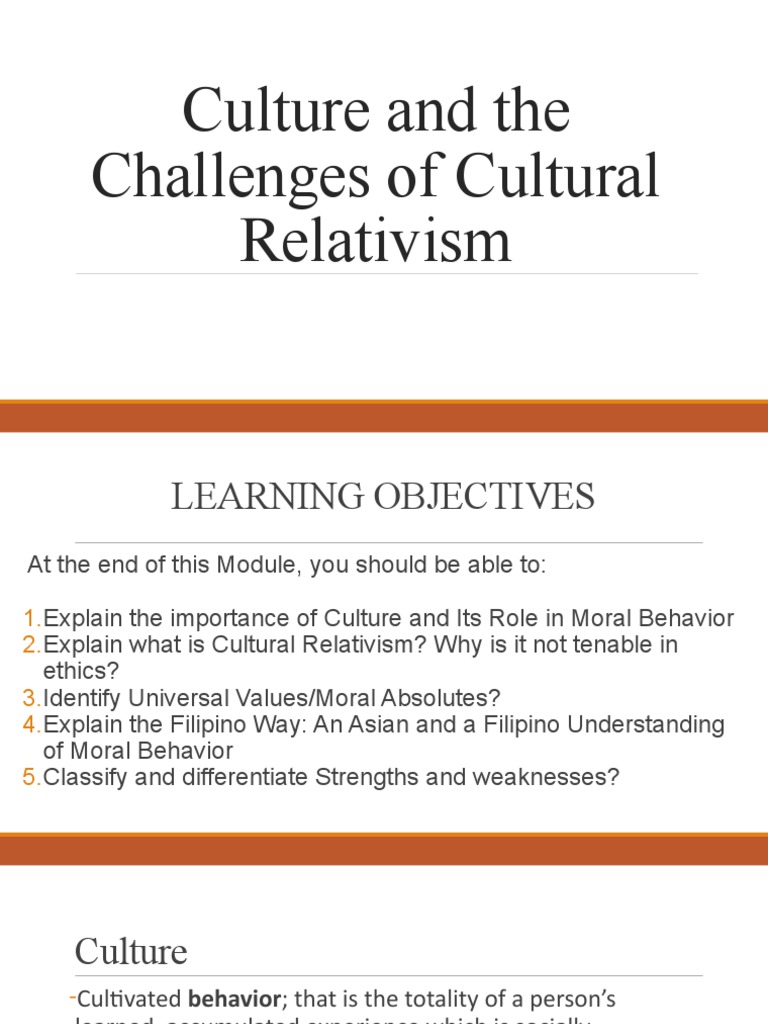Cultural relativism is a concept that posits that a person’s beliefs, values, and practices must be understood based on that individual’s own culture rather than be judged against the criteria of another culture. This perspective promotes the idea that all cultural viewpoints are valid and should be appreciated for their uniqueness. The underlying premise of cultural relativism is deeply rooted in the historical evolution of anthropology, sociology, and ethics, inviting vigorous discussions across various disciplines. This expansive concept often finds its way into presentations, particularly PowerPoint formats, which serve to educate audiences about its nuances and implications.
The background for such presentations often begins by delineating the foundational definitions of cultural relativism. Initially, one may find a distinction between cultural relativism and ethnocentrism. Ethnocentrism refers to the evaluation of other cultures through the lens of one’s own cultural biases, often leading to a devaluation of those differing cultures. Conversely, cultural relativism encourages understanding cultural practices in their own context. This fundamental contrast sets a critical stage for further discussions on the subject.
As readers explore a PowerPoint presentation on cultural relativism, they can expect an examination of historical context. Understanding philosophical figures, such as Franz Boas, one of the pivotal advocates for cultural relativism, is essential. Boas’ assertions in the early 20th century emphasized the significance of cultural context and helped establish the discipline of cultural anthropology. Other thinkers, like Ruth Benedict and Margaret Mead, further contributed to the discourse with their seminal works on cultural norms and values. Highlighting these scholars’ contributions can elucidate how cultural relativism emerged from diverse intellectual traditions.
Delving deeper, one may encounter the cultural relativism debate, characterized by the tensions between universalism and cultural specificity. The principle of universalism posits that certain rights and morals are inherent to all human beings, regardless of cultural context. However, cultural relativists argue that promoting universal human rights can perpetuate a form of cultural imperialism. The PowerPoint presentation can illustrate this juxtaposition with case studies that provide concrete examples. Different societies hold divergent views on issues like marriage practices, gender roles, and the treatment of minority groups. Each example serves to challenge the notion of a singular moral framework applicable to all cultures.
Another significant section of the presentation can focus on the implications of cultural relativism in contemporary society. It is particularly pertinent to discuss the impact on global debates, such as human rights, humanitarian intervention, and social justice movements. When considering interventions in culturally specific practices—such as female genital mutilation or polygamy—cultural relativism advocates for a nuanced approach that respects cultural contexts while advocating for human dignity. This aspect of the discussion invites audiences to critically engage with the moral ramifications of their beliefs on cultural practices.
Furthermore, the PowerPoint may expand upon the critiques of cultural relativism. Critics argue that cultural relativism can sometimes lead to moral paralysis, where individuals become hesitant to critique harmful cultural practices for fear of imposing their views. This paradox calls for a careful balance between respecting cultural diversity and addressing practices detrimental to welfare, equality, and human rights. Including specific examples of cultural practices that face scrutiny can enrich this dialogue.
The potential applications of cultural relativism across various disciplines represent another layer of discussion. In contexts such as global commerce, understanding cultural relativism can enhance intercultural communication and promote more effective collaboration. Similarly, in the area of education, integrating cultural relativism helps foster inclusivity by encouraging diverse perspectives within curricula. Readers can glean insights on how cultural relativism informs practices in these fields, paving the way for better understanding and cooperation in an increasingly interconnected world.
Furthermore, discussions surrounding cultural relativism often intertwine with the themes of identity formation and group membership. A nuanced exploration of how individual identities are shaped by cultural contexts can provide depth to the presentation. It can emphasize how culture not only influences personal values but also societal norms and collective actions. An understanding of identity shapes the broader dialogue regarding cultural relativism while drawing attention to how cultural narratives can impact social cohesion.
Lastly, the PowerPoint may conclude with future directions for exploring cultural relativism. As globalization continues to influence cultural exchanges, the need to cultivate cultural sensitivity becomes paramount. Interdisciplinary perspectives integrating psychology, sociology, and global studies can provide a broader lens through which to analyze cultural relativism. Additionally, discussions about the digital age and social media reveal how cultures intersect and adapt in a technologically connected world. This consideration can prompt further inquiry into how cultural relativism will evolve and how social networks influence cultural practices.
In summation, a PowerPoint presentation on cultural relativism offers a comprehensive exploration of the concept’s historical roots, foundational theories, real-world implications, critiques, and applications across various disciplines. Engaging with this topic equips audiences with tools to better understand cultural dynamics, fostering more informed global citizens. The breadth of content readers can expect is vast, spanning philosophical discourse, ethical considerations, and applications in contemporary society, revealing the complexities of navigating a world enriched with cultural diversity.
